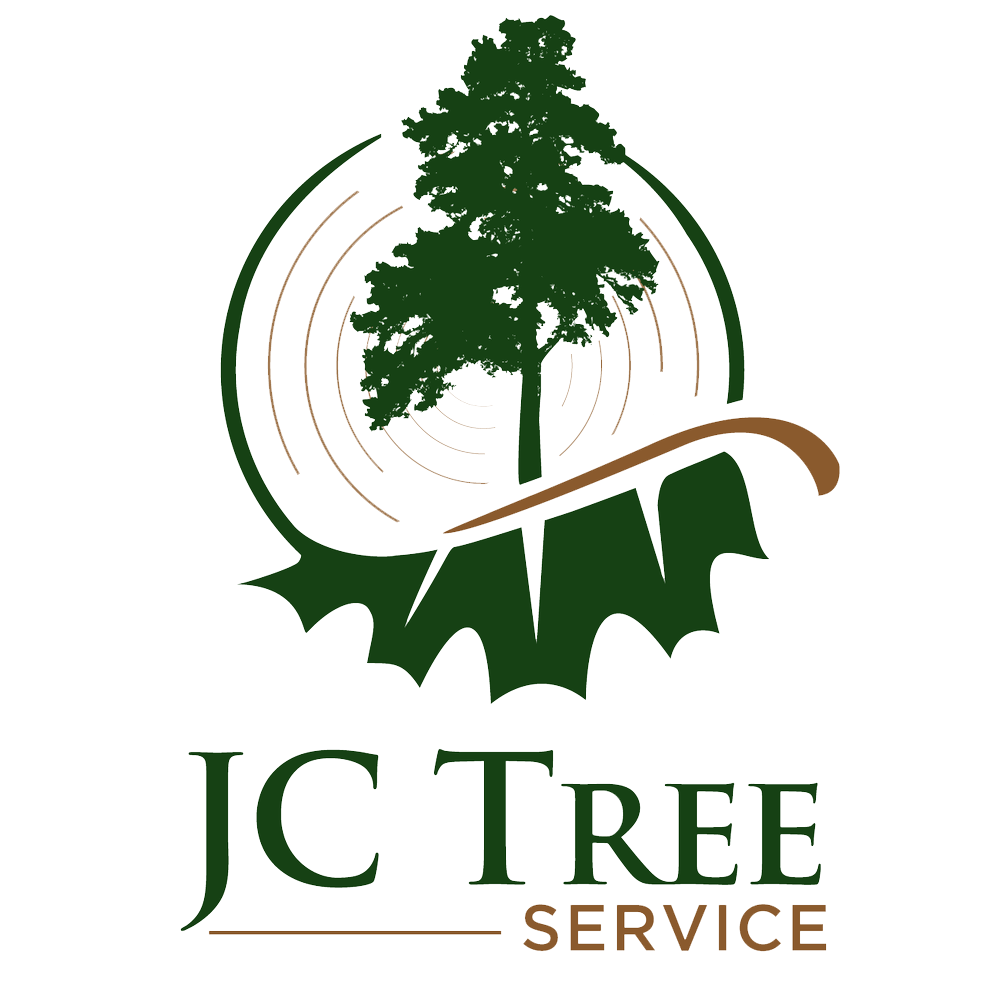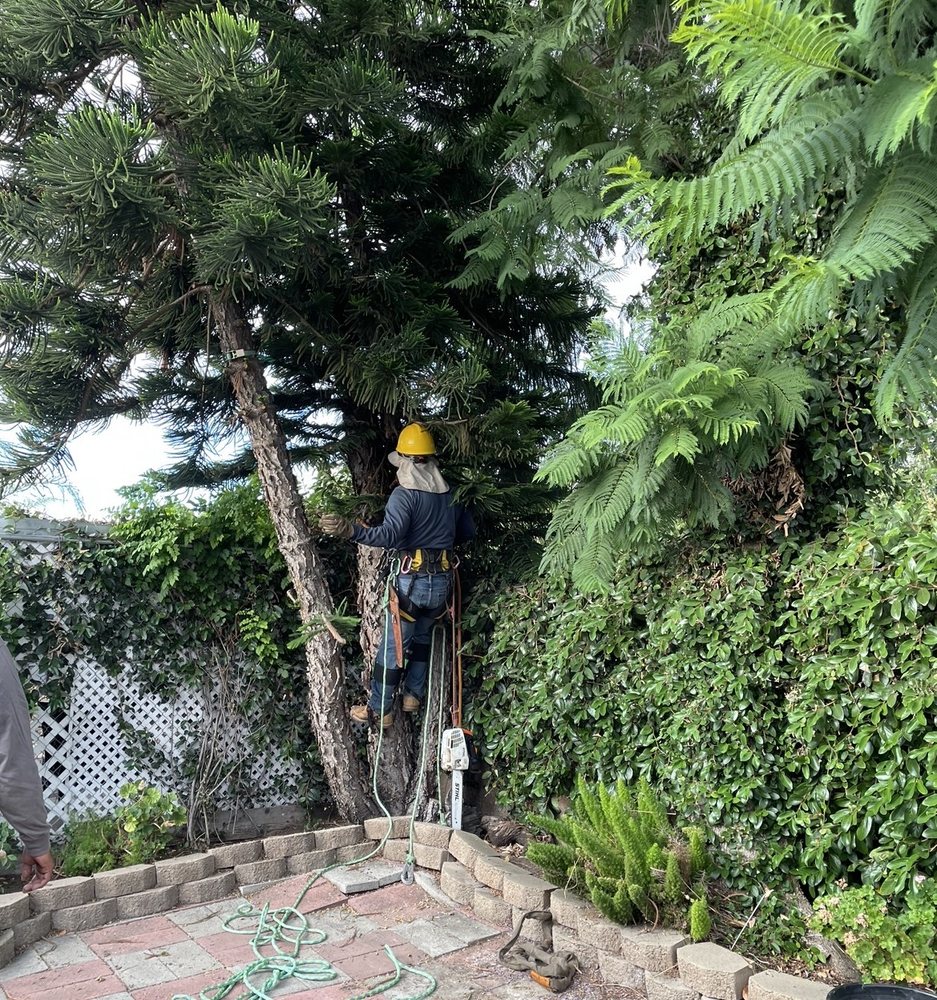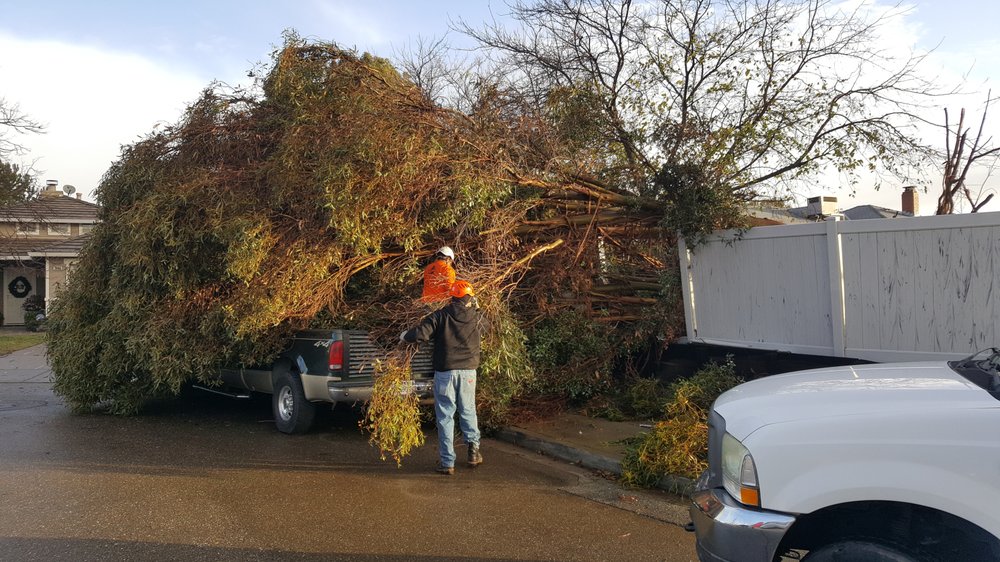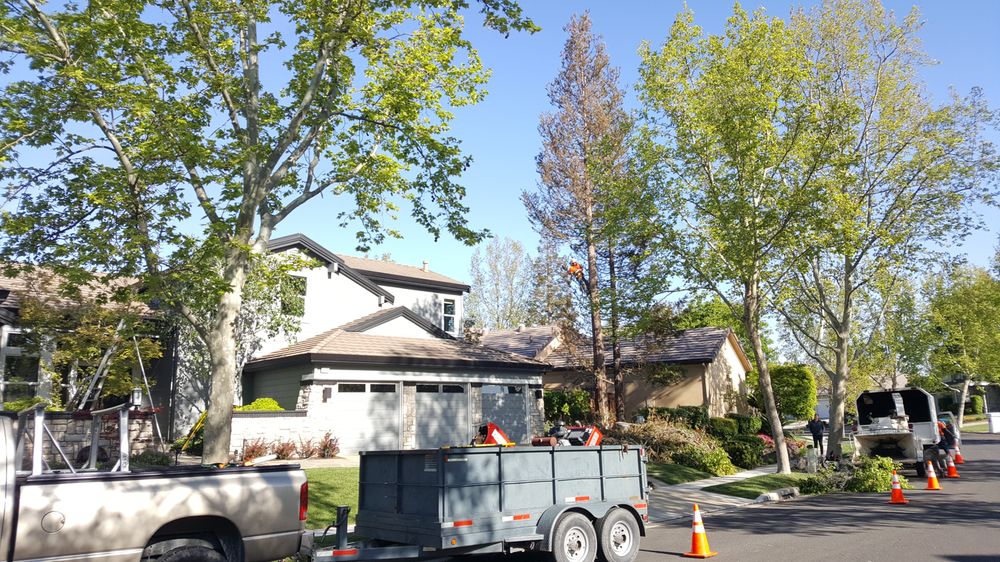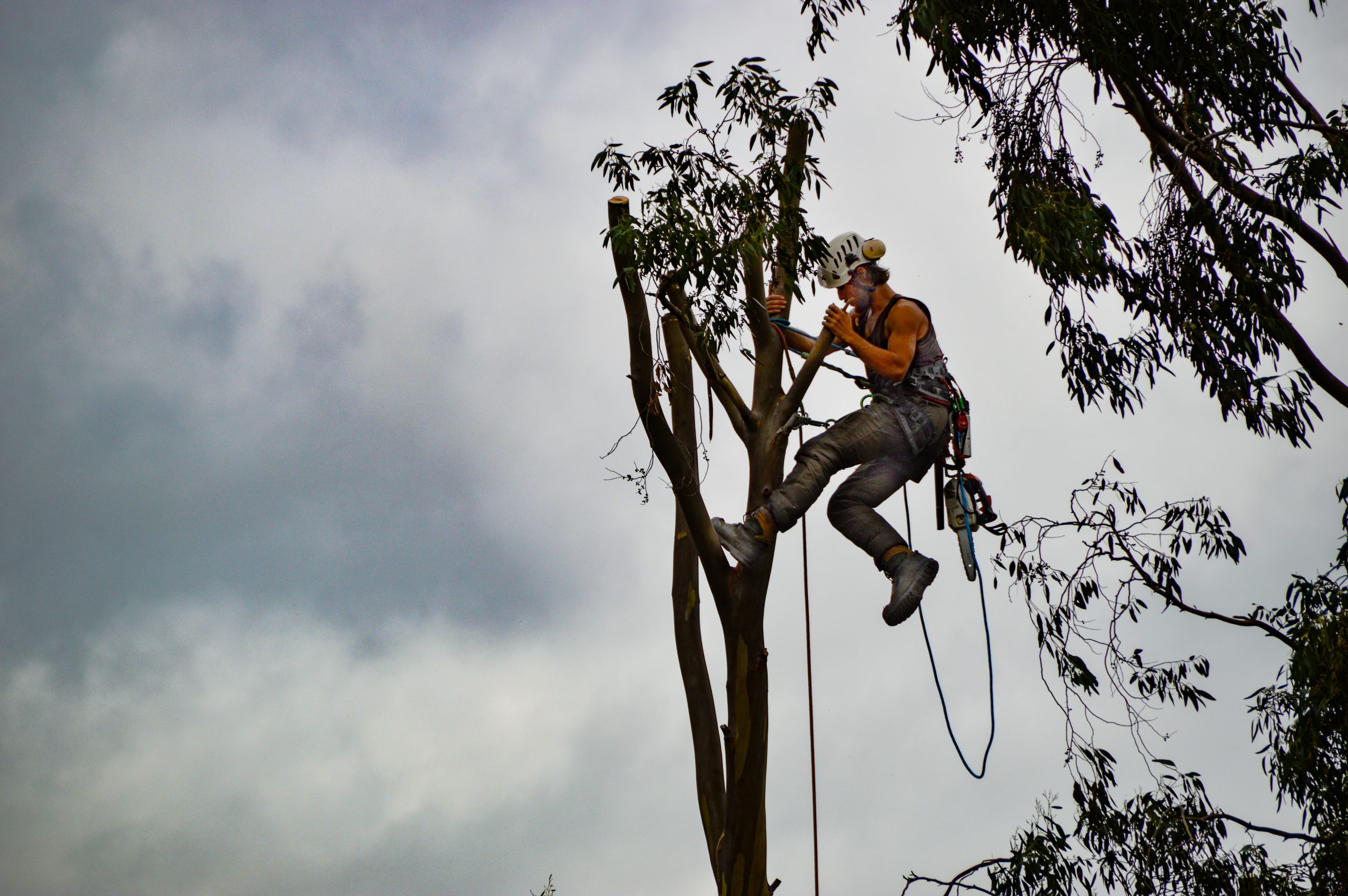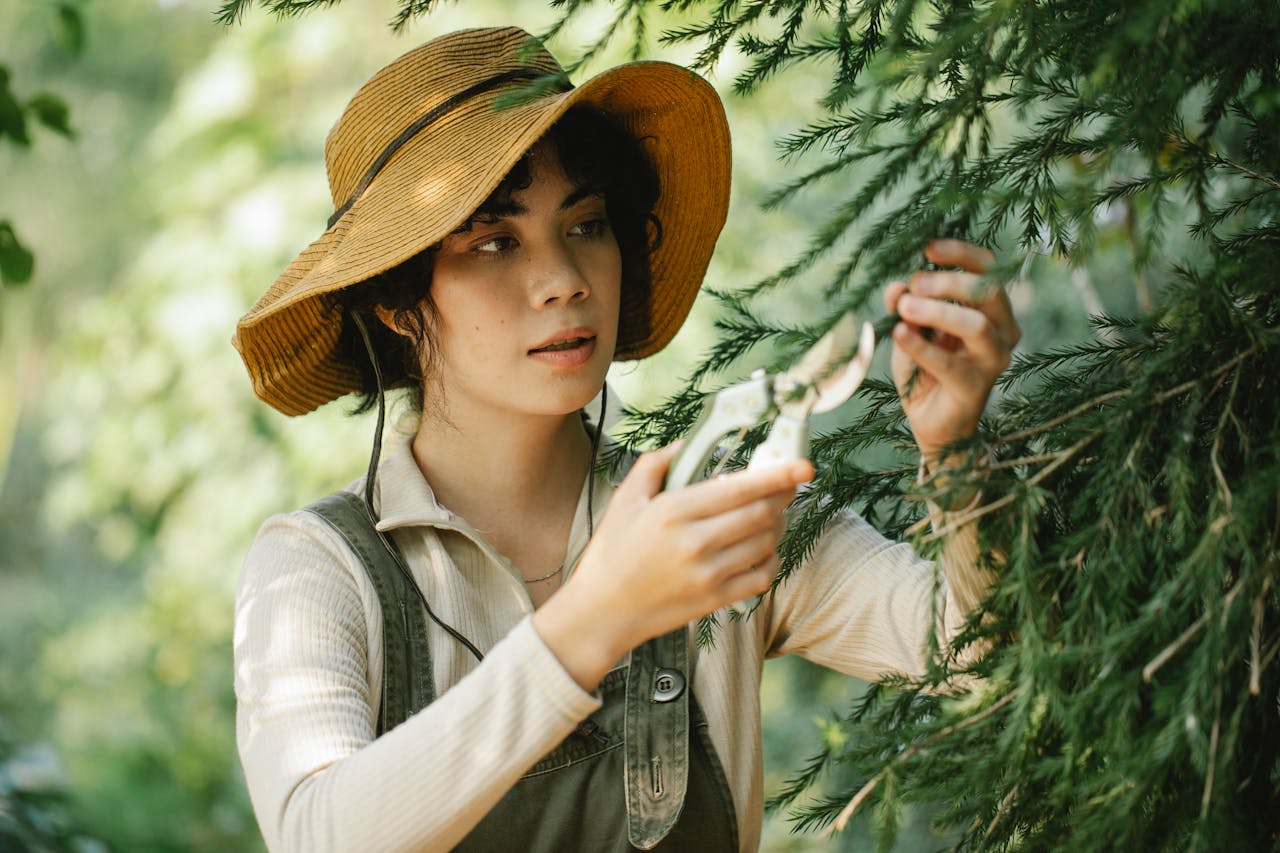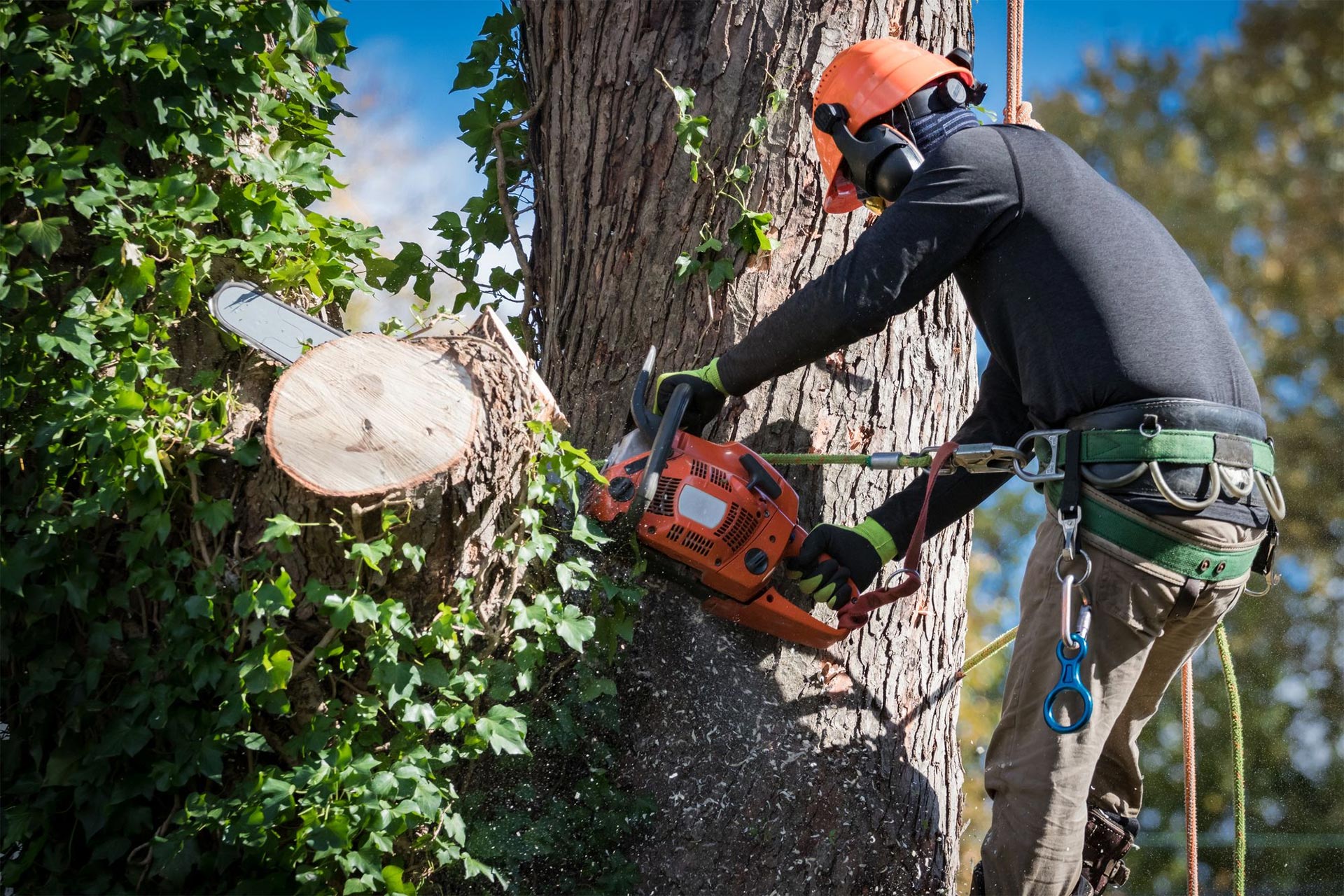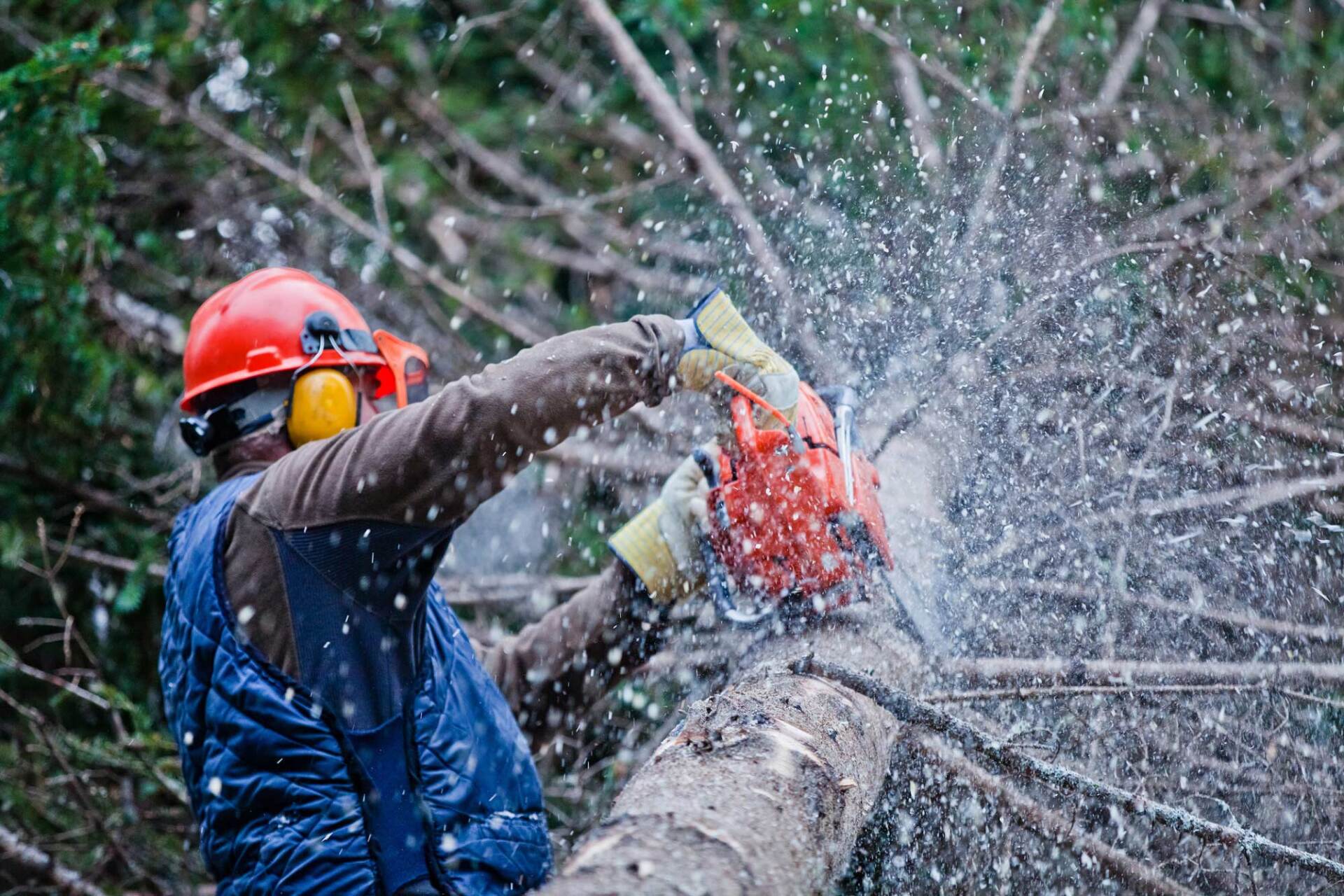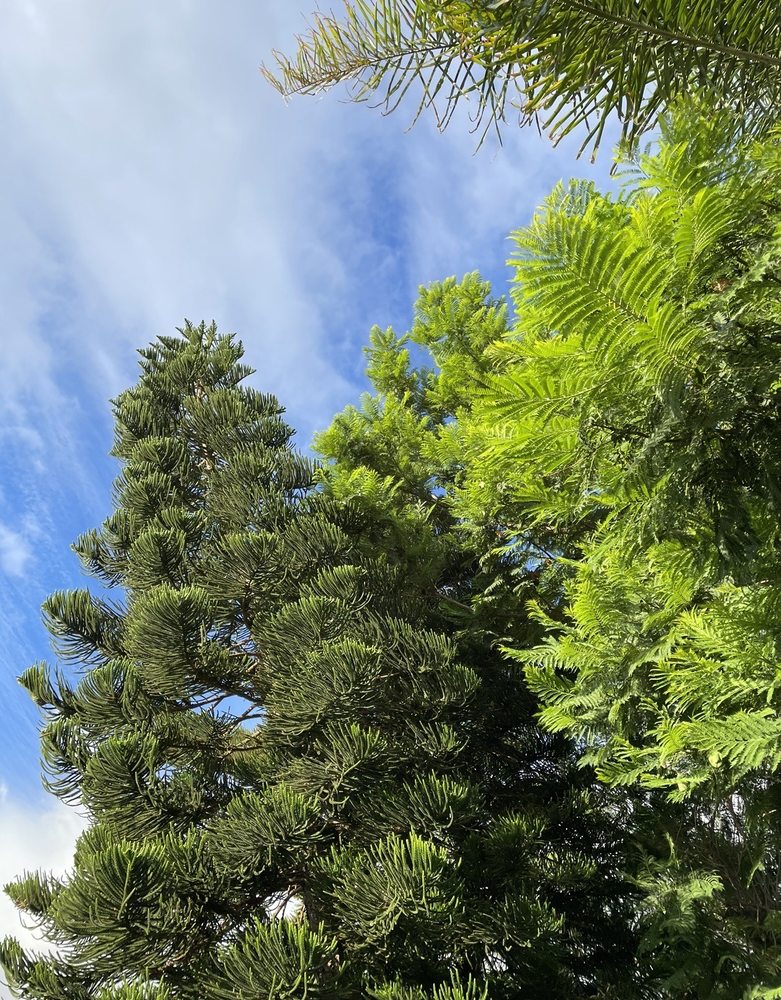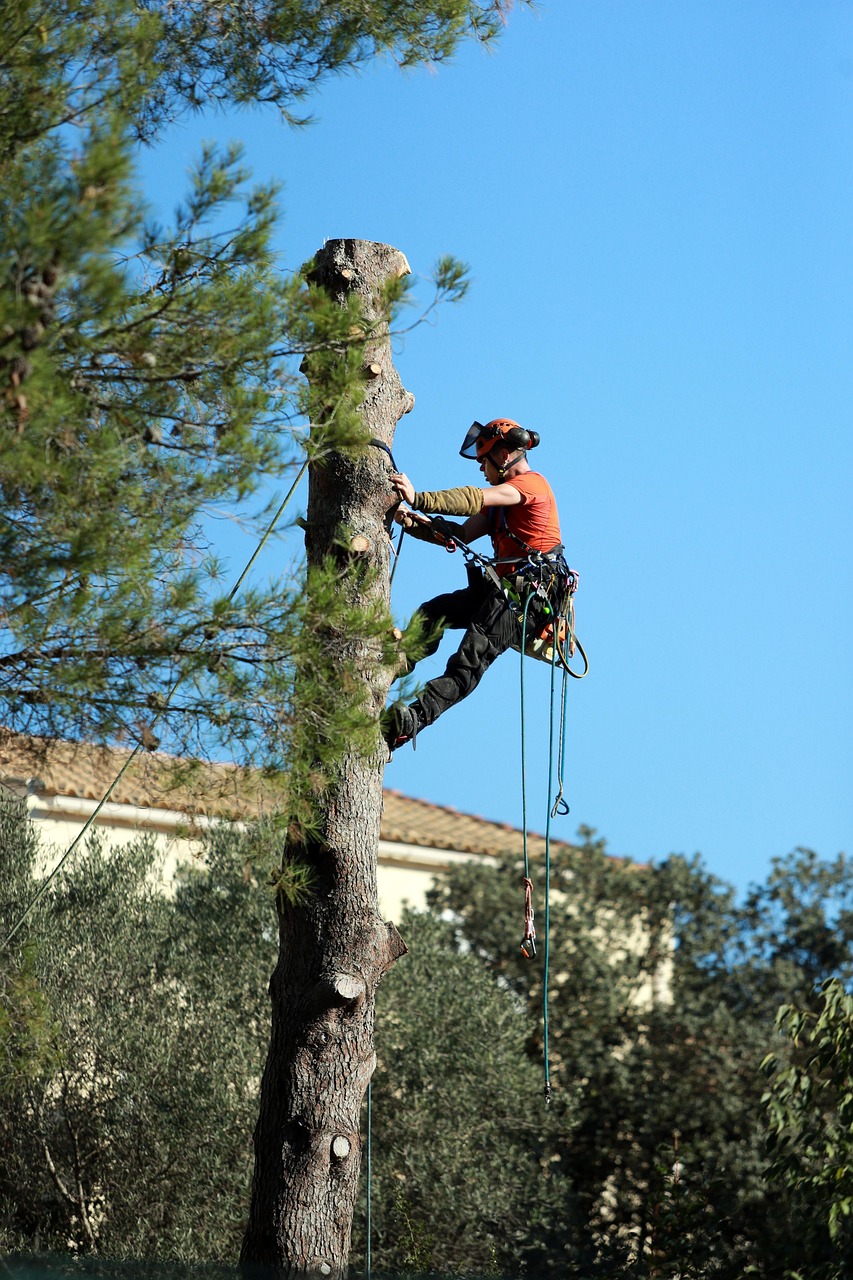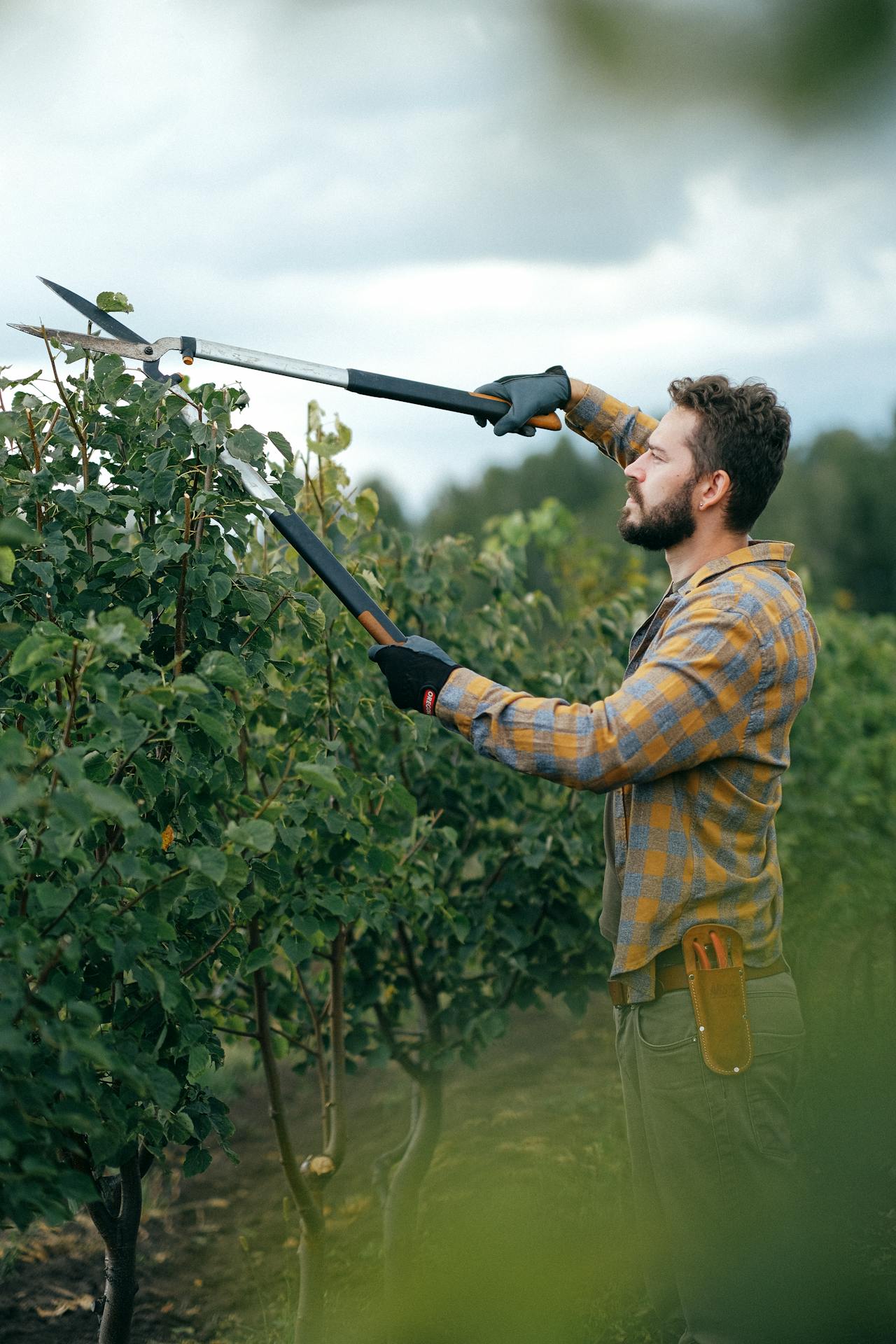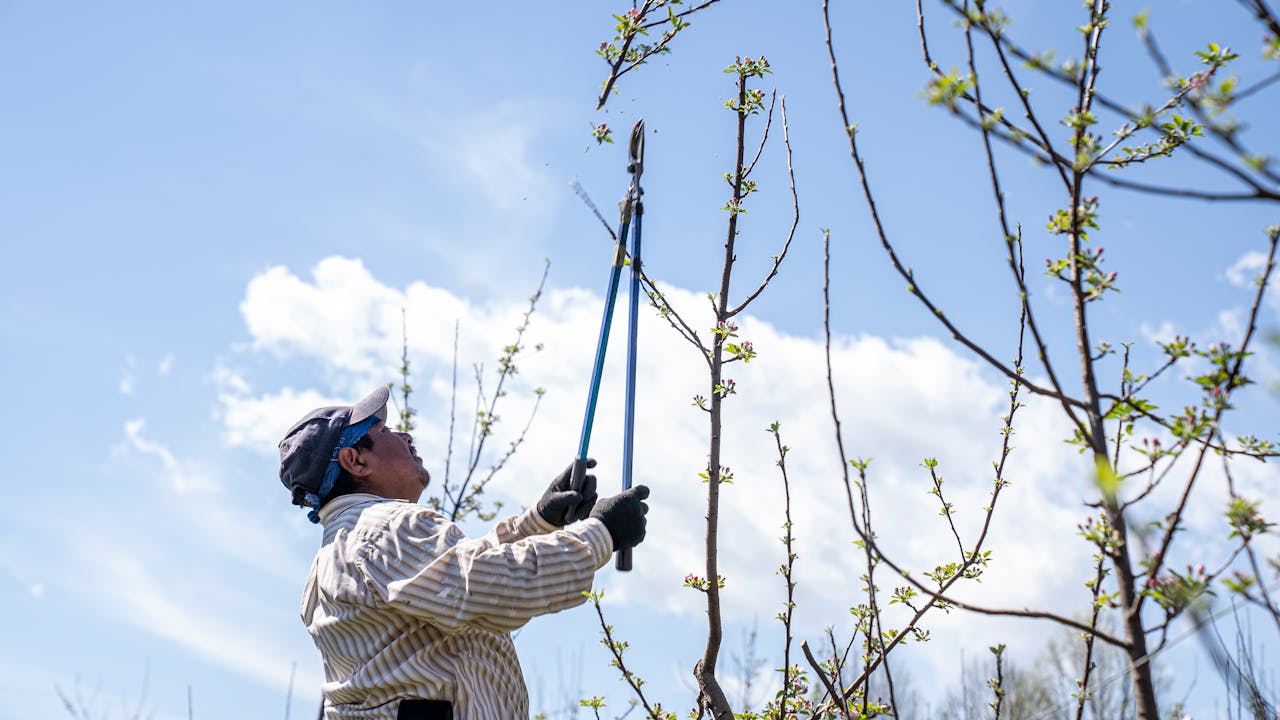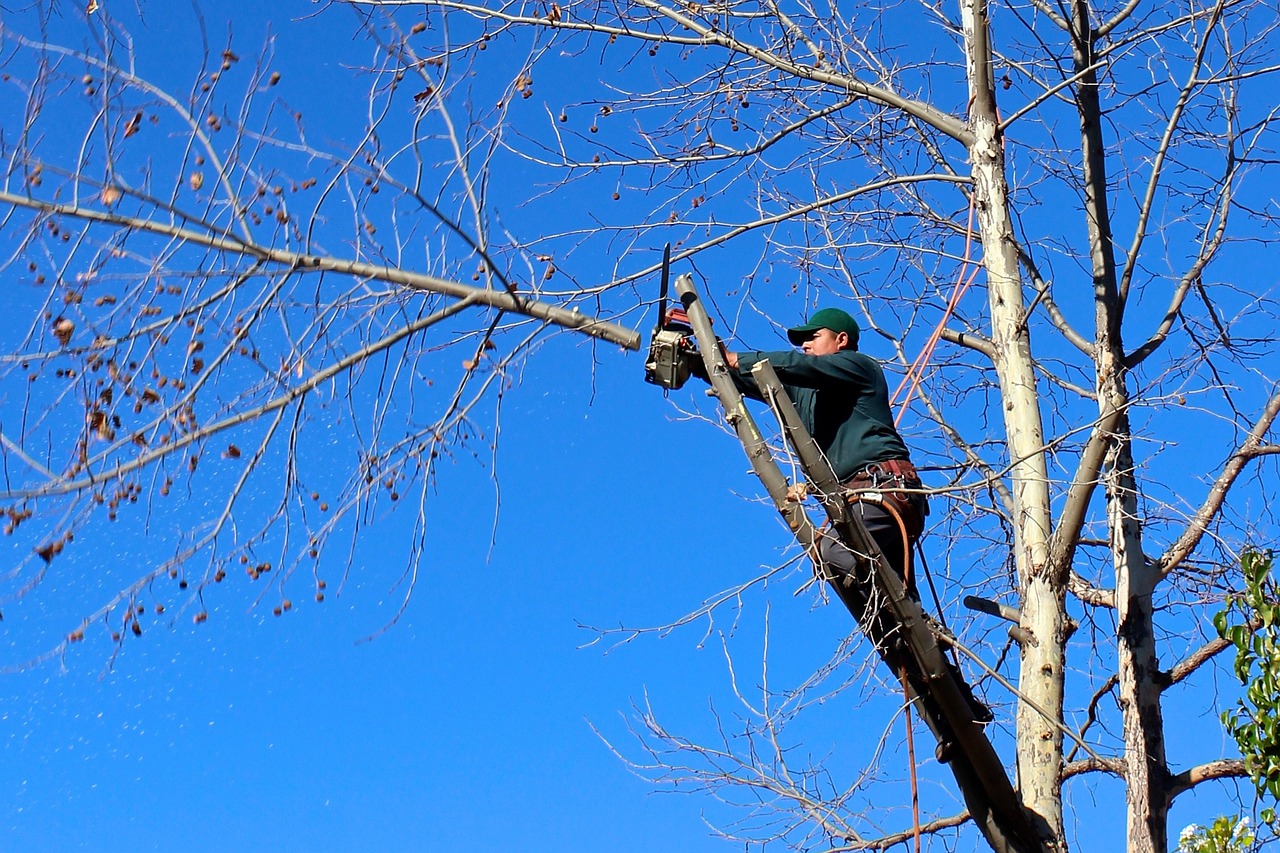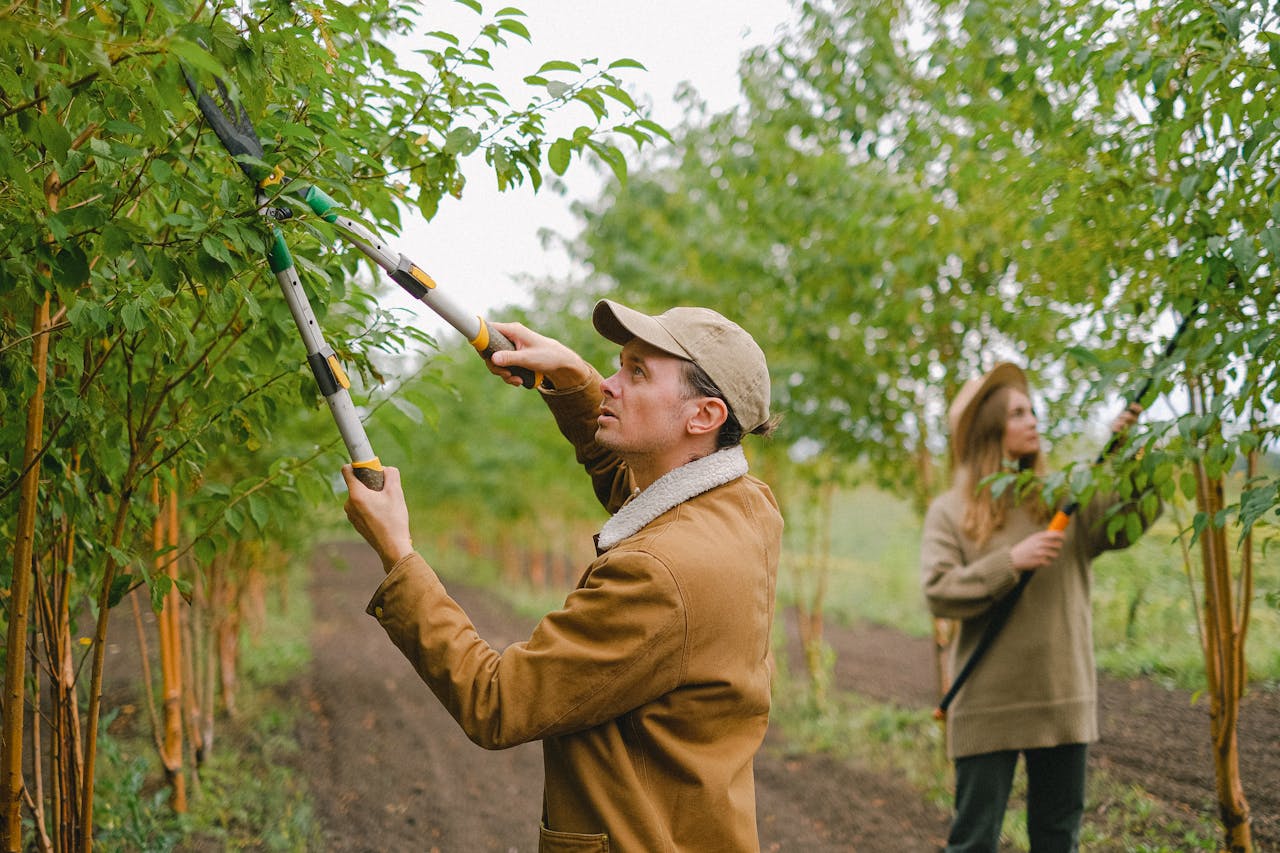Key Takeaways:
- Topping is a harmful pruning method that removes large portions of a tree’s canopy, leading to long-term health issues.
- Suckers, which grow after topping, drain the tree’s energy and make it more susceptible to pests and diseases.
- Topping attracts pests like aphids, caterpillars, and borers, which can further damage the tree.
- Fungal infections from topping can lead to internal decay, weakening the tree’s structure.
- Cracks and cavities caused by topping expose the tree to environmental stress, infections, and decay.
- New growth after topping is weakly attached, making it prone to breakage and instability.
- Topping reduces the tree’s leaf coverage, limiting its ability to produce energy through photosynthesis.
Improper tree topping, or “topping,” is an aggressive and harmful pruning method that involves removing large portions of a tree’s canopy, typically to control its size or shape. While this may seem like a quick fix for overgrown trees, topping can have long-lasting, detrimental effects on a tree’s health, stability, and overall lifespan. This article outlines the key warning signs that a tree may be suffering from improper topping and explains why these signs occur.
Understanding these signs and the reasons behind them is crucial for any tree owner or arborist looking to maintain healthy trees. By recognizing the early warning signs of tree stress due to topping, it becomes easier to intervene before irreversible damage occurs. Timely intervention can help prevent the development of diseases, reduce the risk of pest infestations, and improve the overall health of the tree.
1. Excessive Sucker Growth: A Tree’s Defense Gone Wrong
What Is Sucker Growth?
Sucker growth, often seen after a tree has been topped, refers to the development of new shoots or stems that grow rapidly from the stubs left behind after the topping process. These shoots are weakly attached and tend to grow in a chaotic, unstructured manner. In response to the stress of topping, trees produce suckers as part of their natural recovery process. The new growth appears as thin, often spindly branches that emerge from the tree’s wounds.
Why Is It Harmful?
Suckers are not just weak in structure; they also drain the tree’s energy reserves without offering long-term benefits. When a tree produces excessive suckers, it focuses energy on producing new growth rather than nurturing its roots, bark, and foliage. This leads to several negative outcomes:
- Energy Drain: Producing suckers consumes vital resources, reducing the energy available for healthy growth. The tree uses its stored energy to support the growth of these new shoots, depleting reserves that could otherwise be used for recovery and growth of stronger, more functional branches.
- Weak Structure: Suckers are not as sturdy as the original branches. These shoots often have poor attachment to the main trunk and are vulnerable to breakage. In stormy conditions, suckers are especially prone to snapping off, leading to further injury and destabilization of the tree.
- Increased Susceptibility To Pests And Disease: Suckers provide a perfect breeding ground for pests such as aphids, caterpillars, and other tree-damaging insects. Additionally, they can serve as entry points for pathogens that lead to fungal and bacterial infections. Over time, this weakens the tree’s immune defenses and accelerates decline.
Signs Of Sucker Growth
- Clusters of small, thin shoots emerge from the cut stubs.
- Weak and brittle branches with leaves that look out of place compared to the original canopy.
- New growth that looks disorganized and chaotic, as if the tree is struggling to regain its previous form.
2. Increased Pest Infestations: An Invitation For Unwanted Guests
Why Topping Attracts Pests
Topping creates large, exposed wounds on a tree’s trunk and branches. These open wounds are an easy entry point for pests, including insects, fungi, and bacteria. After topping, the tree’s natural defenses are compromised, making it more susceptible to these invaders. Pests such as aphids, caterpillars, and borers are especially attracted to stressed trees, as the tree’s weakened condition makes it easier for these pests to thrive.
Types Of Pests That Infest Topped Trees
- Aphids: Aphids feed on the sap of trees, weakening the plant and making it more susceptible to other issues. Aphid-infested trees will often show signs of yellowing or curling leaves, as well as a black, sooty mold caused by aphid secretions.
- Caterpillars: These larvae can cause significant damage by consuming the tree’s foliage, leading to defoliation. Without leaves, a tree cannot perform photosynthesis, making it weak and vulnerable to other stressors.
- Beetles And Borers: Wood-boring beetles and their larvae enter through the damaged areas left by topping. Once inside, they can cause extensive internal decay and weaken the structural integrity of the tree, sometimes causing irreparable damage.
- Ants: While ants themselves may not harm a tree directly, they often protect aphids from predators in exchange for honeydew, a sugary substance produced by the aphids. This mutual relationship creates a cycle that further encourages pest activity and disease spread.
Signs Of Pest Infestation
- Presence of visible pests such as aphids, beetles, or caterpillars.
- Damage to leaves, such as yellowing, browning, or holes.
- Sticky sap or black mold growing on leaves and branches.
- Visible insect trails or webs along the trunk or branches.
- The presence of ants clustering around the tree, especially near aphid colonies.
3. Fungal Growth On Wounds: A Tree’s Internal Battle
How Topping Leads To Fungal Growth
Topping leaves large, open wounds that take a significant amount of time to heal. These open wounds are vulnerable to fungal infections, which can cause severe internal decay. Fungal pathogens, such as Armillaria (honey fungus) and Ganoderma, are particularly dangerous because they attack the tree’s vascular system, which is responsible for transporting water and nutrients.
Why Fungal Growth Is Dangerous
- Decay And Rot: Fungi break down the cellulose and lignin in the tree’s tissues, causing the tree to rot from the inside out. This decay weakens the tree and makes it more likely to fall or lose branches during storms.
- Pathogen Spread: Fungi and their spores can spread to other trees nearby, creating a larger infestation that can affect multiple trees in the area.
- Structural Integrity: As fungal growth continues, the internal decay reduces the tree’s ability to support its weight. The tree becomes more fragile and can fail without warning.
How To Identify Fungal Growth
- Blackened, slimy areas around the wound or cut site.
- Fruiting bodies (often resembling mushrooms) growing near the base or wound site.
- Soft, spongy, or discolored areas in the trunk or branches which indicate internal decay.
4. Cracks Or Cavities On The Bark: Opening The Door For Further Damage
The Effect Of Topping On Bark Integrity
Topping creates large wounds and removes branches from key structural areas of the tree. The resulting cracks or cavities in the bark are not just cosmetic; they serve as gateways for disease-causing organisms. As bark cracks and splits, the tree becomes vulnerable to environmental stressors, such as extreme temperatures or drought, which exacerbate the damage.
Why It’s Harmful
- Decay And Infection: Cracks in the bark expose the tree’s inner tissues to moisture, which can lead to rot and fungal infections. The infection can spread quickly, affecting the structural stability of the tree.
- Weakened Structural Support: Cavities created by cracks compromise the tree’s overall stability, making it more susceptible to wind, storm damage, or limb failure.
- Increased Risk Of Tree Death: Over time, the combination of internal decay, weakened bark, and further infection leads to the slow demise of the tree, sometimes resulting in its death.
What To Look For
- Visible cracks or deep splits in the bark.
- Cavity-like openings where branches were removed.
- Signs of sap leakage or oozing from the wounds.
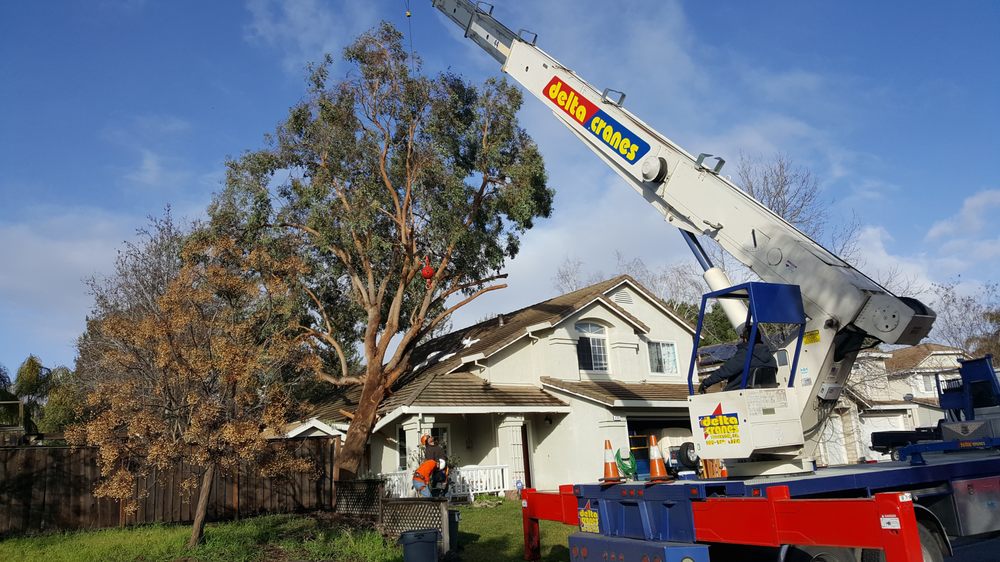
5. Weakly Attached New Growth: Fragile And Unstable
Why New Growth After Topping Is Weak
The tree’s recovery after topping is often characterized by rapid, disorganized growth. However, this new growth is frequently weakly attached to the tree, making it more vulnerable to damage. The growth that emerges from topping lacks the structural stability and depth that older, uncut branches have developed over time.
The Dangers Of Weak New Growth
- Risk Of Breakage: Branches that grow weakly attached are more likely to snap off during high winds or heavy storms, further damaging the tree and creating potential hazards to nearby property or individuals.
- Inability To Heal Properly: Trees need time to heal and strengthen their growth. Weak growth inhibits this process, leading to a diminished ability to recover fully and develop strong, durable branches.
- Limited Long-Term Success: As weak growth continues to sprout, it may be unable to support itself, leading to further failure and possible limb loss.
What To Look For
- New shoots appear fragile and thin compared to the original branches.
- Drooping or bending branches under their weight.
- Frequent breakage of newly grown branches.
6. Reduced Leaf Coverage: A Tree’s Struggle To Produce Energy
How Topping Affects Photosynthesis
Topping removes large portions of a tree’s canopy, leaving behind fewer leaves for photosynthesis. Leaves are crucial for a tree’s ability to produce food by converting sunlight into energy. Without a full canopy, the tree cannot generate enough nutrients to support its long-term health.
Why Reduced Leaf Coverage Is Harmful
- Reduced Energy Production: With fewer leaves, the tree struggles to perform photosynthesis efficiently. As a result, it may suffer from a lack of vital nutrients, leading to poor growth and overall weakness.
- Increased Vulnerability To Stress: Trees with reduced leaf coverage are less resilient to drought, extreme temperatures, and pest infestations.
- Decline In Health: Over time, a tree with reduced foliage will likely experience stunted growth, leaf yellowing, and a general decline in vitality.
What To Look For
- Noticeable loss of leaves, particularly in the upper canopy.
- Small or discolored leaves.
- Poor overall growth despite the passage of time.
7. Increased Susceptibility To Sunscald: Exposing The Tree’s Vulnerable Areas
How Topping Exposes Trees To Sunscald
Topping a tree removes a significant portion of its canopy, exposing the inner bark and branches to direct sunlight. This sudden exposure can cause sunscald, a condition where the bark becomes damaged by the sun’s heat. Sunscald can cause discoloration, cracking, and even death of the exposed tissues.
Why Sunscald Is Harmful
- Bark Damage: Sunscald causes the outer bark to crack and peel, leaving the tree more vulnerable to infections and pests.
- Internal Dehydration: Direct sunlight on the exposed bark can lead to dehydration, damaging the tree’s vascular system and reducing its ability to transport water and nutrients.
- Reduced Growth: The damage caused by sunscald can slow the tree’s overall growth and make it more susceptible to other environmental stresses.
What To Look For
- Discolored or damaged bark, often white, brown, or yellow.
- Dry, brittle bark on exposed areas of the tree.
- Cracking or peeling of the bark in areas that were once shaded by the canopy.
Conclusion: The Importance Of Proper Tree Care And Intervention
Improper tree topping may seem like a quick solution for controlling tree size or appearance, but the long-term consequences can be severe. Trees that have been topped are at risk for excessive sucker growth, pest infestations, fungal infections, and structural damage. These effects can significantly reduce a tree’s ability to survive and thrive. If you notice any of the warning signs discussed in this article, it’s crucial to seek professional help from a certified arborist. Early intervention can help save the tree and ensure it continues to grow strong and healthy for many years to come.
By taking the time to understand the risks and symptoms of improper tree topping, tree owners can become proactive stewards of their landscapes and avoid causing long-term harm to their trees.
Enhance Your Landscape With JC Tree Service’s Expert Tree Maintenance
Proper tree maintenance is essential for keeping your property safe, beautiful, and well cared for. At JC Tree Service, we specialize in comprehensive tree maintenance services for homes and businesses in Brentwood, Antioch, and surrounding areas. Whether you need seasonal pruning, risk assessment, or help managing overgrown branches, our skilled team is here to ensure your trees stay healthy and safe year-round.
Our tree maintenance services are designed to prevent potential hazards, protect your property, and enhance curb appeal. With regular maintenance, we help you avoid risks from weak or damaged branches, manage tree growth, and support long-term health for a vibrant landscape. JC Tree Service focuses on eco-friendly practices, delivering solutions tailored to your needs while keeping your landscape organized and manageable.
Don’t let neglected trees jeopardize your property’s safety and beauty. Contact JC Tree Service today for a free, no-obligation quote on our professional tree maintenance services. Discover how expert care can transform your outdoor space!
Disclaimer
The materials available on this website are for informational and entertainment purposes only and not to provide legal or professional advice. You should contact your attorney or home improvement specialist to obtain advice concerning any particular issue or problem. You should not act or refrain from acting based on any content included in this site without seeking legal or other professional advice. The information presented on this website may not reflect the most current home improvement developments. No action should be taken in reliance on the information on this website. We disclaim all liability concerning actions taken or not taken based on any or all of the contents of this site to the fullest extent permitted by law.
